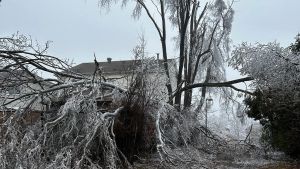TORONTO — Ontario’s Independent Electricity System Operator (IESO) has issued a statement suggesting the impact of the solar eclipse of April 8 on the Ontario energy grid will be “minimal” and “well within the realm of regular grid operations.”
The eclipse is passing over southern Ontario, where the majority of the province’s solar generation is installed, which will result in a substantial reduction to the supply of solar energy. During the eclipse, the IESO forecasts that the loss could be as much as 1,800 megawatts.
As it gets darker outside, it is likely people will turn on their lights, which may increase residential electricity demand. Additionally, most school boards have declared April 8 a P.A. day, so the number of children at home may also impact residential demand. The IESO anticipates the impact will be minimal.
“The IESO is confident and will ensure that there is adequate supply on the grid during the eclipse. Most of Ontario’s solar facilities are connected to local distribution networks, not the provincial transmission grid,” stated a release.
“The IESO is confident and will ensure that there is adequate supply on the grid during the eclipse.”
The total solar eclipse is expected to last from approximately 2 p.m. to 4:30 p.m. EST.
In Ontario, the eclipse will be most visible from Niagara Falls. The estimated timing of the eclipse in Niagara Falls is: 2:04 p.m. – partial eclipse begins; 3:18 p.m. – totality begins; 3:21 p.m. – totality ends; 4:32 p.m. – partial eclipse ends.
As solar facilities ramp down and up over a relatively short period of time, other generators will also need to ramp up and down to make up for the shortfall, states the IESO. Weather will be monitored closely. If it is a cloudy day, solar facilities will be producing less energy to begin with, so the overall impact of the eclipse will be less noticeable.
With the eclipse passing over North America, neighbouring jurisdictions in the U.S. will also experience a drop in supply from their solar resources. This could result in the IESO being asked to export more electricity. The IESO is taking this into account during planning, while ensuring Ontario’s energy needs are met first.











Recent Comments
comments for this post are closed